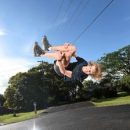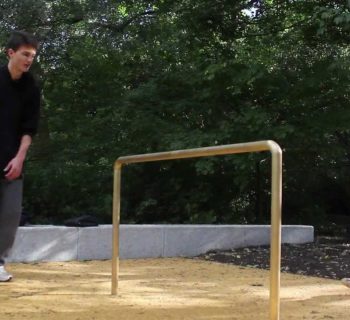You're going to soon if you didn't see it yet. Parkour is a type of improvised outside gymnastics (also called free-running). Using no other gear than sporty shoes and a high dose of nerve, professionals –called traceurs –rollover vehicles and brick walls, slide under park benches, and swirl over natural and human-constructed constructions, all of them with fast-lightning precision and effectiveness.

Although the terms "parkour" and "freerunning" are frequently used interchangeably, parkour is associated more effectively with the efficiency of motion and freerunning. Many of America's towns now have parkour or freerunning clubs and, if you have good weather, trousers can often flip and walk around public parks and playgrounds. They scream buildings, improve their abilities, and challenge each other to move more and more.
"A full-body training is every step. Even the simplest of the two walls need your hands, feet and even head to be exactly placed and aware, "tells Levi Meeuwenberg, a freelance driver and a Tempest Freerunning member who runs at the Tempest Academy in Chatsworth, Calif.
Parkour Prep Course:
Do the training two or three times a week two or three times a week, inspired by parkour. Following the described warm-up, perform exercises 1 to 5 as a circuit and complete all the perfect repeats from each movement in 30 seconds. Rest as little between exercises as you can tolerate, but rest between circuits for two minutes. Over and over again, repeat 4 to 6 times. Note how many reps from each motion you execute over 30 seconds and attempt to batter your record in each next round without sacrificing your shape or safety for an additional challenge.
The Workout:
- Bench Vaults
- Reverse Q.M. Pushups
- Box Jumps Plus Altitude Drops
- Traversing Pull-Ups
- Side Monkeys
Once you have chosen a path with several barriers, find out how you can use them. Jump or climb over the park bench, swing from the pull-up bar, "Q.M.-ing" up the stopover. Toss push-ups, tug-ups, squats or jumps at suitable points along the course for an extra challenge. String together in a logical sequence, in order to find a course that takes approximately two to three minutes.







